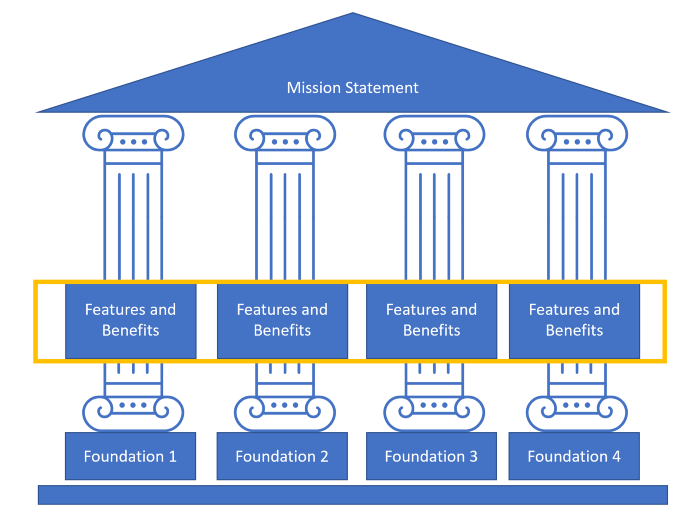Your constituents are important members of your school community. They may be donors, parents of children, event goers, and they have the opportunity to be your word of mouth marketing. So how do you communicate with them that aligns with your school’s mission and vision while maintaining personalized and relevant contact points? Below is a simple 3 step approach to ensure your messaging is on brand and relevant.
Depending on your organization, you may be a one (wo)man show, part of a team that handles marketing, or there might be a whole other office dedicated to communication strategy. Regardless, the same principles will apply to any structure!
Step 1: Confirm the key messaging around your school. What are prospective students learning about your school? What are the “pillars” you stand by? Consider a “Brand House.” What is your mission statement? What are the 3 to 4 foundational components of your school that support this vision?

Step 2: Determine a list of features and benefits that deliver on these foundations. Example: Your school promotes the idea of students being prepared for the workforce. School feature: Senior Spring Internships

Step 3: Develop your content. As you begin to capture the stories and content you wish to share with your constituents, make sure the stories are relevant. Does the story align to your foundational pillars? Are your stories diverse in what angle and content you are sharing to be relevant to a wide array of individuals? Is there a “so what” to the article. Why is this important to know and how did your school influence the outcome of this story?

There are always so many stories one could share with an audience. The power is choosing the ones that best represent your school with a meaningful message. Not every story is going to be of interest to every user hence the above exercise to ensure you have a variety of topics captured. In addition, if you start seeing that your content might only be relevant to one subset of your constituents, target them directly with the message rather than oversharing to a larger population that might be disinterested or less likely to open your next communication.